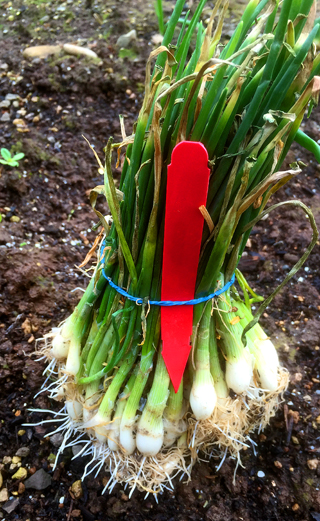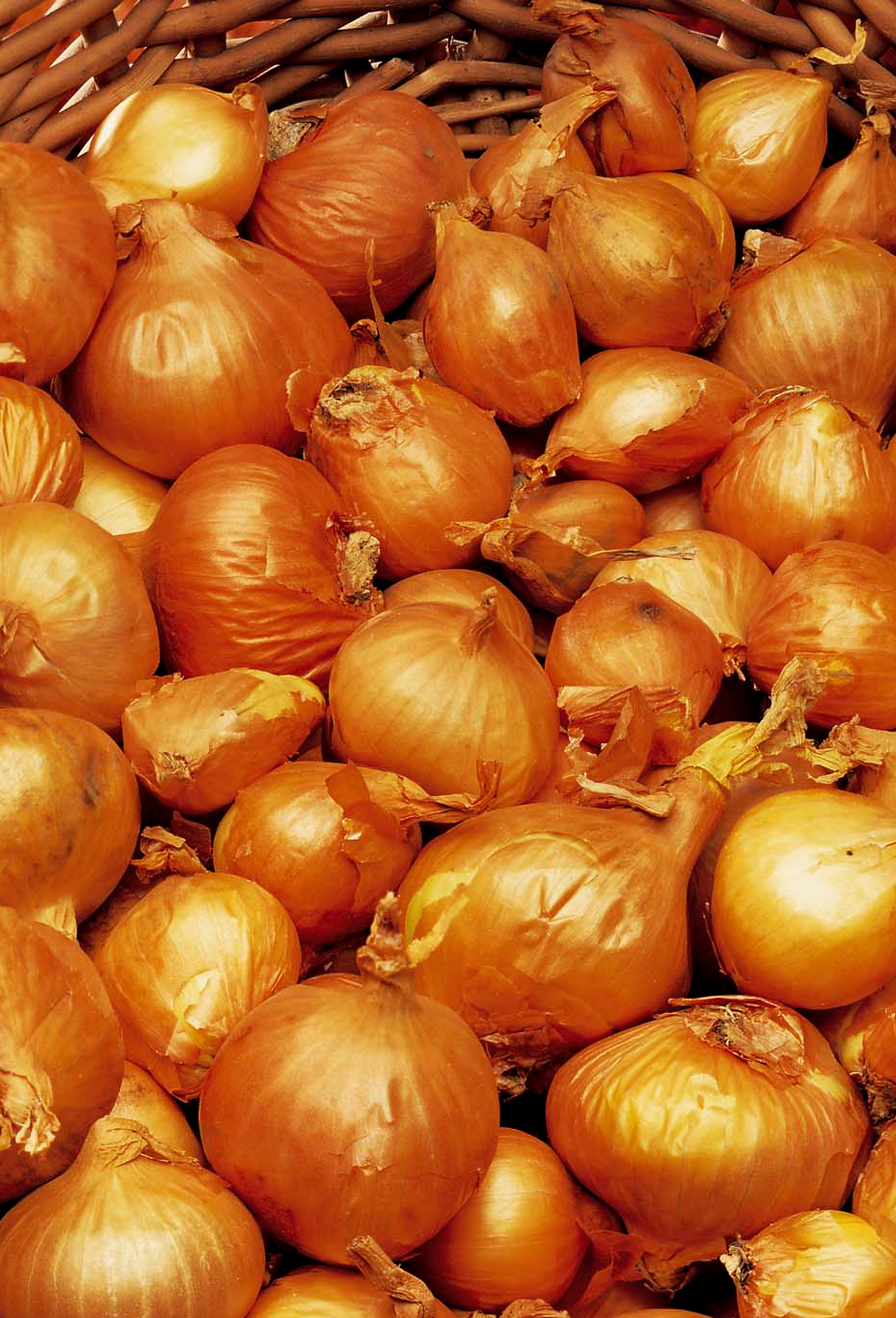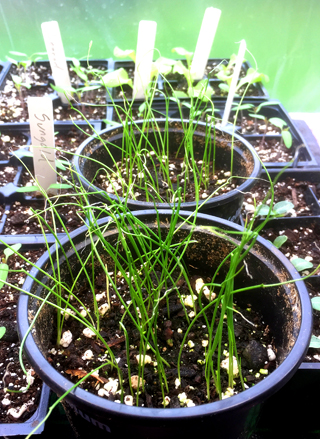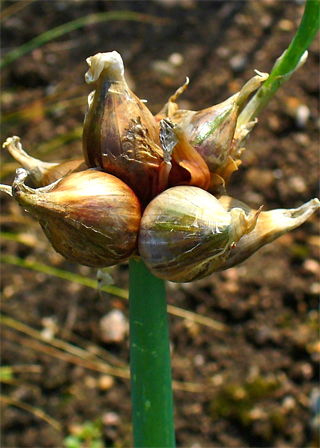
Growing Onions in Oregon, Washington and B.C.
Onions (Allium cepa) are a hardy biennial of the lily family. Although the common bulbing onion is a native of the Middle East, wild onion types are numerous and widespread. Onions were highly regarded by the ancient Egyptians who even used them as currency to pay the workers who built the pyramids.
Onions include fleshy bulbing types and smaller green-shooted types. Various cultivars have been developed for storage, slicing, and pickling.
Green onion stems are eaten fresh in salads or added to cooked dishes like a flavoring herb. Bulb types are eaten fresh or cooked. The bulb is actually made of closely packed leaf bases, thus, the layered effect.
Specialty types include walking onions, also known as Tree onions or Egyptian onions. A very hardy perennial, the walking onion forms a cluster of bulblets at the stalk tip. The stalk bends down, bringing the bulblets in contact with the soil where they take root.
Onion cultivars are divided into “long-day” and “short-day” types. Only long-day types should be grown north of 36° N. latitude (Eugene Oregon is at about 44° N and Vancouver B.C. is 49° N.)
Recently, breeders have also developed day-neutral varieties that can be grown anywhere.
The most cost-efficient way to grow onions is from seed, although these are best started indoors due to the longer time required to maturity. To save time, plant “sets,” which are small, immature bulbs, or transplants.
Onions and Your Health
- Onions are rich in sulfur-containing compounds that help resist bacteria and protect against toxic substances.
- Sulfur is also necessary for proper development of connective tissue and skin (more sulfur = fewer wrinkles, yay!)
- There are more polyphenols, including quercetin, in onions than in tomatoes, carrots or red peppers.
- Several servings of onions per week can lower the risk of colorectal, laryngeal, and ovarian cancers.
- Sulfur compounds can also lower blood levels of cholesterol and triglycerides, and improve red blood cell function.
- Onions can help to increase bone density and may be of special benefit to women of menopausal age.
- Onions have also shown potential for improvement of blood sugar balance.
Seasonal Guide
Early Spring:
- Prepare bed if you didn’t do it in the fall.
- To grow your own transplants, start seeds indoors.
Spring:
- If direct sowing outdoors, start when the ground can be worked and continue successive plantings every 3-4 weeks until last frost.
- Sow sets.
- After last hard frost, set transplants out.
Summer:
- Thin and eat first scallions (green onions.)
- Mulch between rows.
- Keep weeded.
- Feed with complete liquid fertilizer or side-dressing of granular fertilizer dug-in lightly. (Careful of those roots!)
Fall:
- For bulbing onions: fold over all leaves when outer leaves turn yellow.
- Two weeks after folding leaves, harvest with a spading fork and lay onions out to dry. Bring inside if it rains.
- Store thoroughly dried bulbs.
- Prepare next year’s bed.
Location
Onions will do best in almost any well-drained, sunny location. Scallions do well in shallower soil, while storage and sweet onions (bulbing types) need deeper soil and benefit from growing in a raised bed.
Soil Prep
Onions need firm soil, so prepare the bed early and allow it to settle for a few weeks. Optimum soil is light, rich and sweet for bulb types. Dig the soil to 16” and incorporate a complete organic fertilizer, finished compost and lime.
Pickling onions need a sandier soil with less organic matter, (to keep bulbs small,) so skip the compost.
Planting
For direct sowing of seeds: Rake the bed finely, sow ¼” deep quite thickly in blocks or rows for scallions. Leave 14” between rows. Thin to 4” apart when approximately 3” tall.
For sets: Plant sets in early spring with pointy tip up and just above the soil line, 3” apart with 14” between rows.
Transplants: Seedlings are fairly frost-hardy so plant out as soon as soil can be worked, 3-4” apart, 14” between rows. You can plant more densely and thin to the strongest plants, eating or transplanting the thinnings.
When plants are 3”-4” tall, side dress with low nitrogen fertilizer (3-12-15.)
Water
Keep the soil moist for steady growth and fleshy bulbs by watering 1” per week in dry weather. Soaker hoses along rows work well. Mulch with straw, shredded leaves or other organic matter to conserve moisture but add slug bait if the weather is still rainy.
Harvest
Begin harvesting scallions at 3”-4”(big enough to chop up for salads.)
For bulbing onions, bend tops over and stop watering when outer leaves turn yellow. This concentrates energy in maturing the bulb. After another week or two, lift the onions with a spading fork and leave on top of the soil to cure. Store onions only when completely dry.
Pests and Diseases
Because of their strong odor onions repel many pests and should be planted throughout your garden.
The few diseases that affect onions are best controlled through crop rotation and removal of diseased plants. Slugs can be a small problem in the early spring.

Onion plants

Onion sets

Onions from seed

